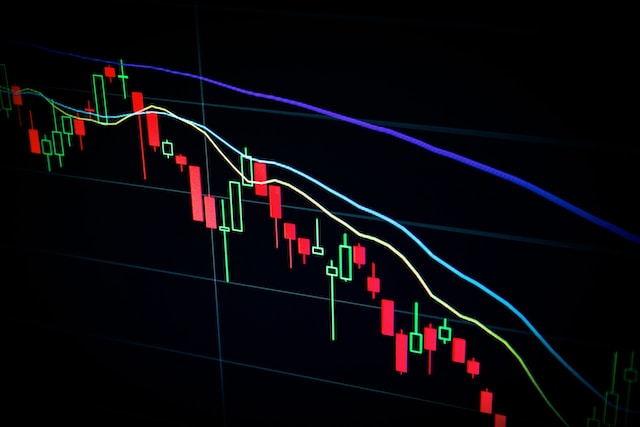Introduction
Trading can be a lucrative venture, but it’s not without its challenges. For new traders, the world of trading can seem overwhelming. With countless strategies, tools, and platforms available, where does one begin? Fear not! We’ve compiled a list of the top 20 trading tips to help you navigate the complexities of the trading market and set you on the path to success.

Setting Up Your Trading Plan
A trading plan is your roadmap in the trading world. It outlines your goals, risk tolerance, and strategies. Without a solid plan, you’re essentially gambling. Here’s what to consider:
- Define Your Goals: Know what you want to achieve. Whether it’s a specific annual return or mastering a particular strategy, have clear objectives.
- Determine Your Risk Tolerance: Decide beforehand how much you’re willing to lose on a trade and stick to it.
- Choose Your Strategy: Whether you’re a day trader, swing trader, or long-term investor, pick a strategy that aligns with your goals and risk tolerance.
Educating Yourself on Trading Strategies
Knowledge is power. The more you know, the better decisions you’ll make. Dive into resources like books, courses, and seminars. Remember, the best traders are always learning.
Understanding Market Conditions
Markets are ever-changing. From bull markets to bear markets, understanding the current market condition is crucial. It helps you adapt your strategy and make informed decisions.
Keeping a Trading Journal
A trading journal is a record of all your trades. It helps you learn from your successes and mistakes. By reviewing your journal regularly, you can identify patterns and refine your strategies.
Mastering Risk Management
Risk is inherent in trading. However, with proper risk management techniques, you can minimize potential losses. Always use stop-loss orders and never invest money you can’t afford to lose.
Developing a Longer-Term Trading Strategy
While day trading can be profitable, it’s also risky. Consider developing a longer-term strategy that focuses on monthly or yearly gains. This approach often requires less time and can be less stressful.
Dealing with Losing Positions
Losses are a part of trading. It’s essential to know when to cut your losses. Holding onto a losing position in the hopes it will turn around can lead to significant losses.
Implementing Effective Stop Losses
Stop losses are tools that automatically sell a security when it reaches a certain price. They’re essential for risk management. Set them at a point where you’re comfortable with the loss.
Embracing the Best Way to Learn
The best way to learn is by doing. Start with a demo account to practice without risking real money. Once you’re confident, transition to a live account.
Utilizing Chat Rooms and Networking with Experienced Traders
Join chat rooms and forums to connect with more experienced traders. They can offer invaluable insights and advice. Plus, networking can open doors to new opportunities.
Staying Informed with News and Economic Updates
Stay updated with the latest news and economic updates. They can significantly impact the markets. Use reliable news sources and consider setting up alerts for major economic events.
Balancing Hard Work and Patience
Trading requires hard work, but it also requires patience. Sometimes the best action is inaction. Wait for the right opportunities rather than forcing trades.
Setting Realistic Goals for Your Trading Journey
Set achievable goals. While it’s possible to see significant returns in trading, it’s also easy to lose money. Be realistic about your potential profits and losses.
Analyzing Trading Performance and Making Adjustments
Regularly review your trading performance. Identify what’s working and what’s not. Don’t be afraid to adjust your strategies based on your findings.
Effective Use of Technical Analysis
Technical analysis involves studying price charts and using statistical measures to predict future price movements. Mastering it can give you an edge in the markets.
Integrating Fundamental Analysis
Fundamental analysis involves evaluating a security’s intrinsic value. It can be especially useful for longer-term strategies. Understand the basics, like reading financial statements and understanding economic indicators.
Using the Right Trading Platforms and Tools
The right tools can make a significant difference. Research different trading platforms and tools to find the ones that best suit your needs.
Managing Margin Trading and Leverage
Margin trading allows you to borrow money to trade. While it can amplify profits, it can also amplify losses. Understand the risks before trading on margin.
Incorporating Psychological Aspects of Trading
Trading is as much a mental game as it is a financial one. Understand the psychological aspects, like dealing with fear and greed, to make better trading decisions.
Conclusion
Trading is a journey of continuous learning and adaptation. By following these 20 tips, new traders can navigate the complexities of the trading world and set themselves up for success. Remember, every trader was once a beginner. With dedication, education, and the right strategies, you too can achieve trading success.
FAQs (Frequently Asked Questions)
- What is the importance of having a trading plan?
A trading plan provides a roadmap for your trading activities, helping you make informed decisions and manage risks effectively. - How can I effectively manage risks in my trades?
Use tools like stop-loss orders, diversify your portfolio, and never invest money you can’t afford to lose. - What are some essential tips for new traders?
Educate yourself, develop a solid trading plan, practice with a demo account, and always stay informed. - How do I choose the right trading strategy for me?
Consider your goals, risk tolerance, and the amount of time you can dedicate to trading. - What are the common mistakes to avoid in trading?
Overtrading, not having a clear strategy, and letting emotions drive decisions are common pitfalls. - How do I deal with losing positions?
Recognize when a trade isn’t going your way and be prepared to cut your losses. - How can I improve my trading performance?
Regularly review your trades, adjust strategies as needed, and continue educating yourself. - How do I choose the best trading platforms and tools?
Research and test multiple platforms to find one that suits your needs and trading style. - What is the role of technical analysis in trading?
Technical analysis helps traders predict future price movements based on historical data and statistical measures. - How can I incorporate fundamental analysis into my trades?
Understand the intrinsic value of a security by evaluating its financial health, industry trends, and economic indicators.
Start Your Trading Journey with Leading Brokers
Discover Evest, the acclaimed broker offering unparalleled asset variety. Dive deep into our comprehensive review and find out why it stands out in the trading world.
AvaTrade is a globally recognized trading platform offering a vast range of assets, cutting-edge tools, and a commitment to trader security.
IG is a globally recognized broker offering an extensive range of markets with advanced trading platforms and a strong regulatory framework.
CMTrading, established in 2012, offers a secure and user-friendly platform for varied trading options, backed by excellent resources and support.






